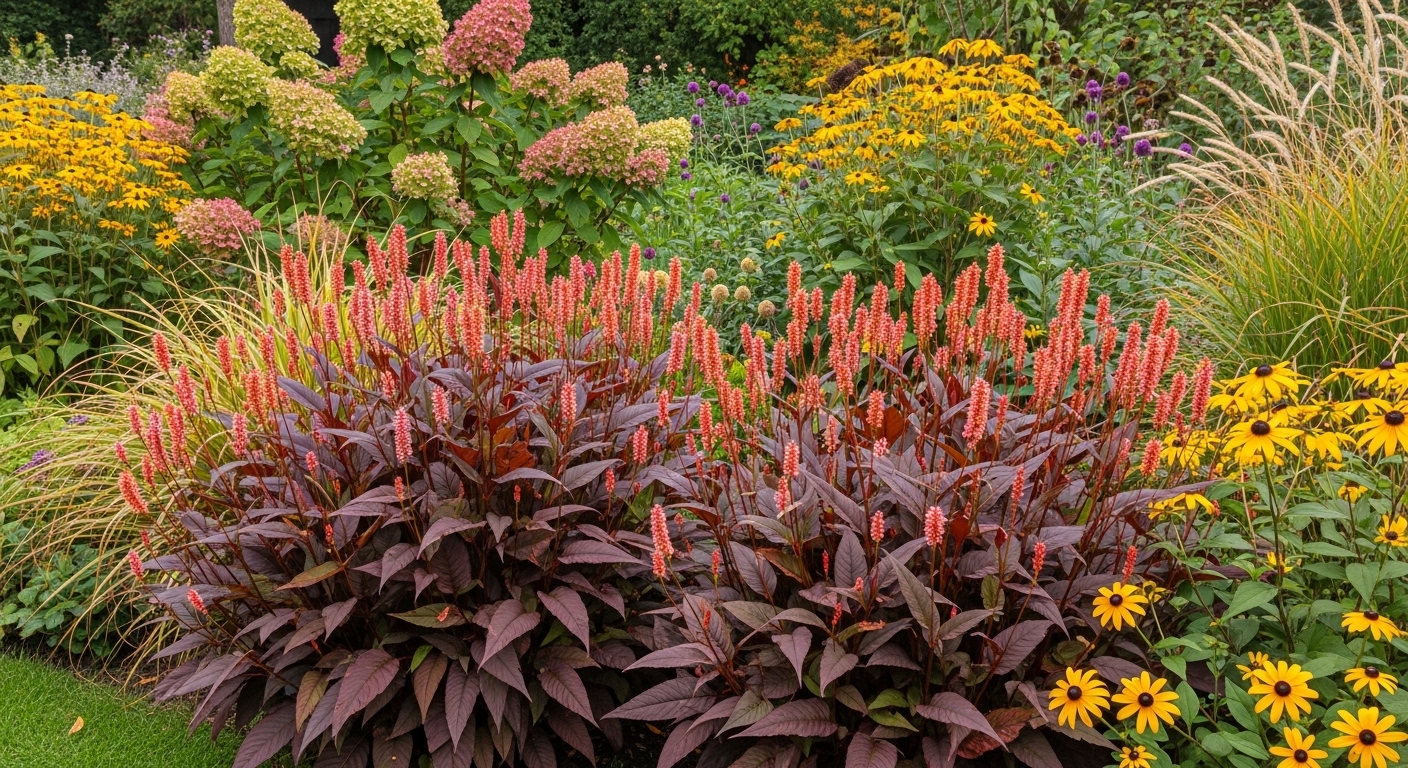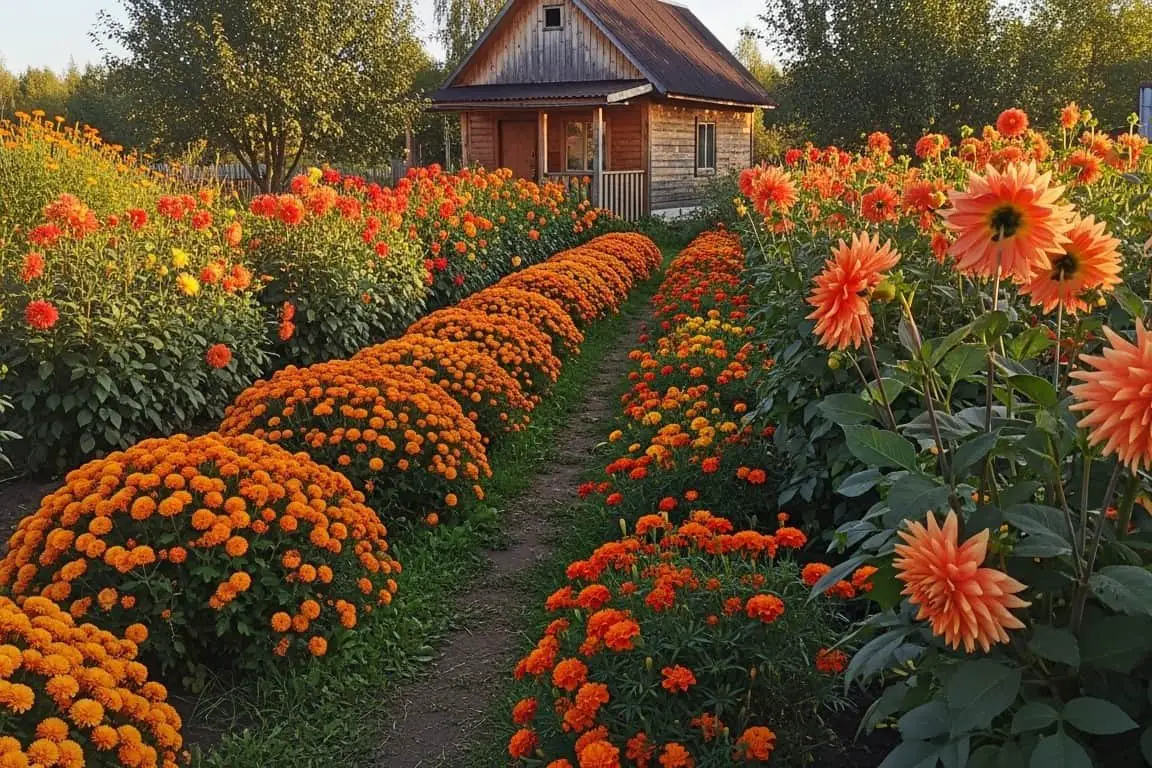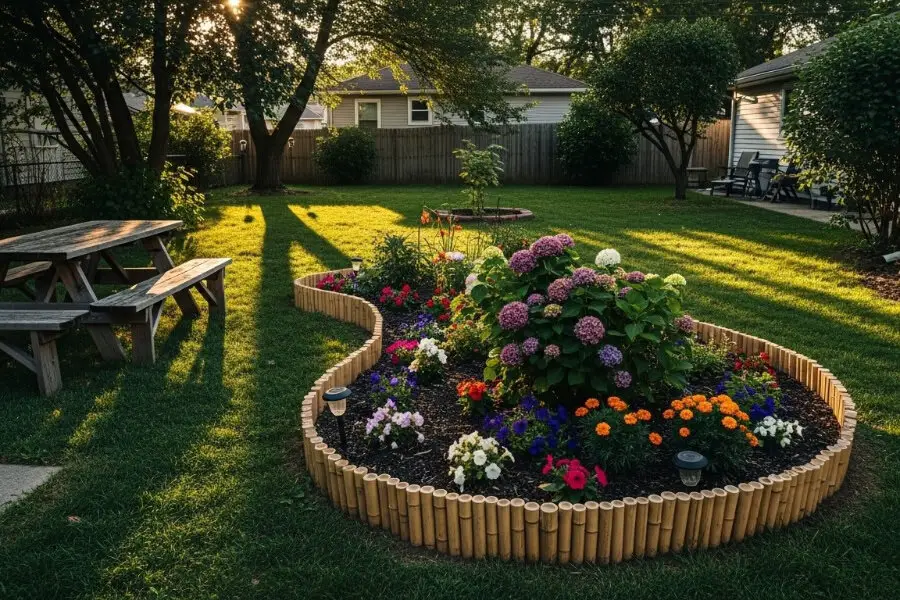
Hi,
Tired of messy garden edges making your yard look untidy? It can be frustrating to find a simple solution.
After exploring options like bricks, stones, and even recycled rubber, I discovered some great ideas that really make a difference.
These garden lawn edging tips can help turn your yard into a neat and beautiful space. Keep reading!
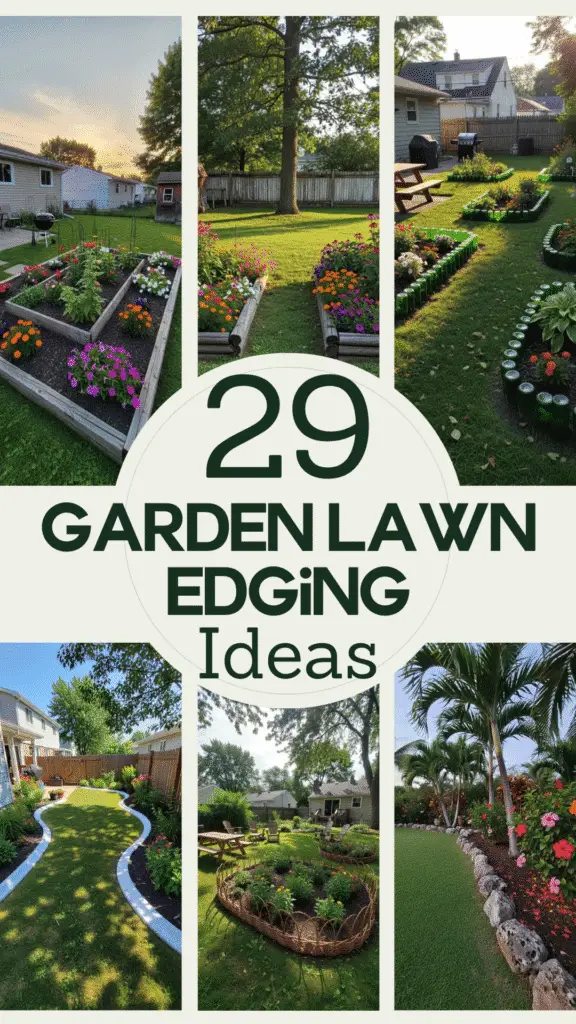
Contents
- 1 29 Garden Lawn Edging Ideas
- 1.1 Bamboo
- 1.2 Black
- 1.3 Brick
- 1.4 Cement
- 1.5 Cobblestone
- 1.6 Concrete
- 1.7 Curved
- 1.8 Flagstone
- 1.9 Flower
- 1.10 Path
- 1.11 Pond
- 1.12 Japanese
- 1.13 Modern
- 1.14 Mosaic
- 1.15 Pallet
- 1.16 Paver
- 1.17 Plastic
- 1.18 Rubber
- 1.19 Sandstone
- 1.20 Scalloped
- 1.21 Sleeper Borders
- 1.22 Steel
- 1.23 Stone
- 1.24 Timber
- 1.25 Tropical
- 1.26 White
- 1.27 Willow
- 1.28 Wine Bottle
- 1.29 Wooden
- 2 Conclusion
- 3 FAQs
29 Garden Lawn Edging Ideas
Let’s explore creative ways to edge your garden. From natural bamboo to sleek steel, there’s something for every style!
Bamboo
I love using natural bamboo for garden lawn edging. It’s made from 100% real bamboo, so it’s strong and lasts a long time. The rustic look adds charm to any yard or flower bed.
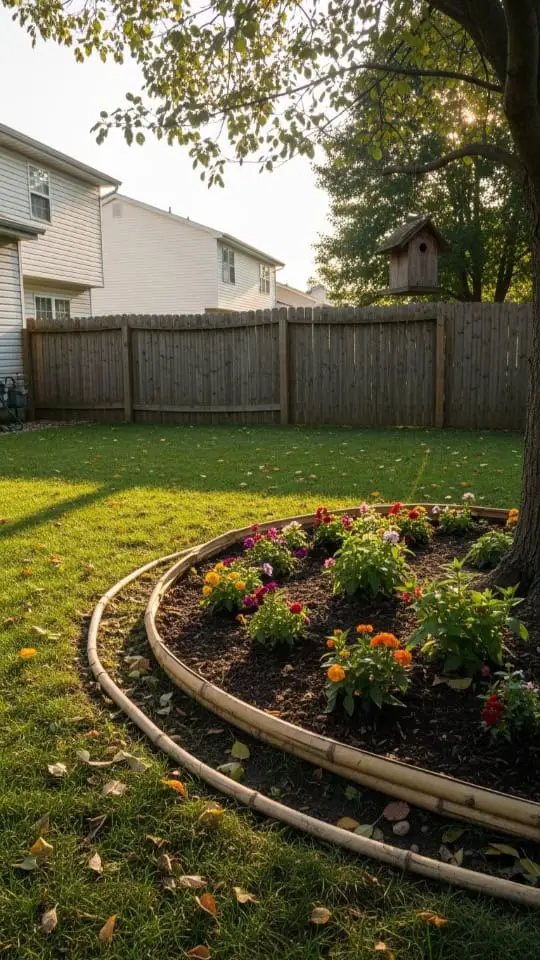
This type of edging is simple to install since no tools are needed. I appreciate how it keeps my plants safe from small animals while looking great too!
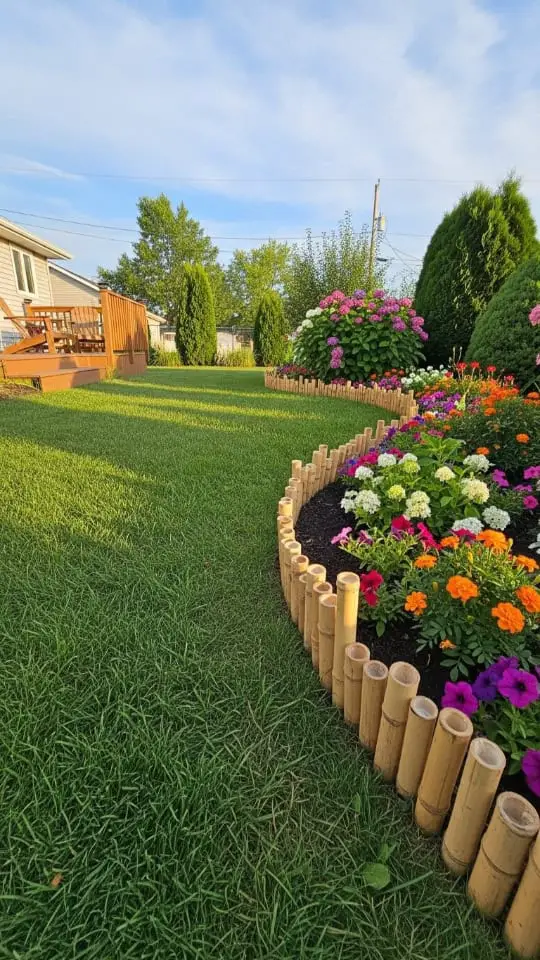
Sizes like 24×14 inches and 39×14 inches make it easy to fit different spaces in the yard.
Black
Black garden edging adds a modern touch. It frames vibrant flowers neatly and keeps grass from creeping in. I enjoy how its sleek design makes colors pop.
The AMURS 20Ft Black Garden Edging Border works well for this purpose.
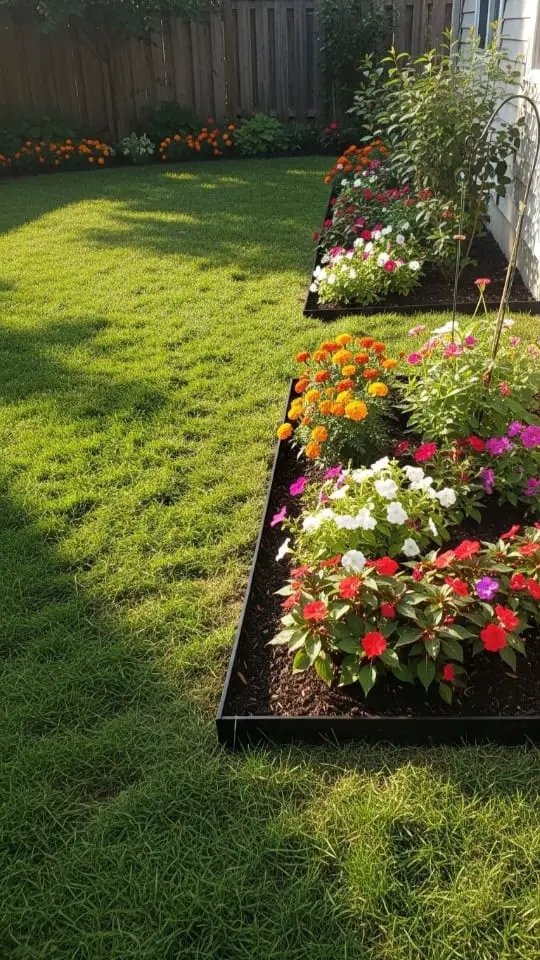
This edging is made of strong plastic. It resists peeling, corrosion, and bending over time. Each piece measures around 12 inches long by 6 inches tall, making it easy to handle.
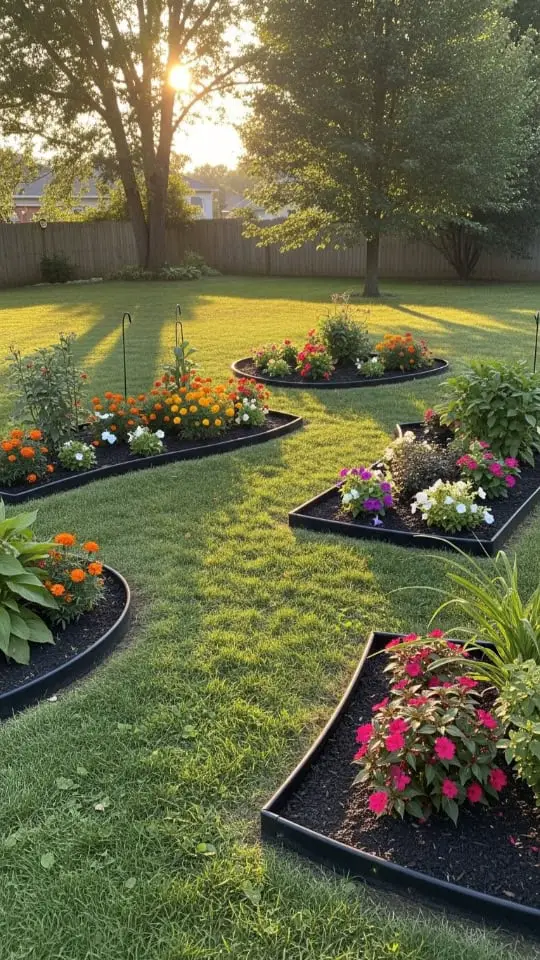
With twenty pieces included, the total length covers enough lawn space for most gardens. The stakes provided help keep everything secure in place too!
Brick
Brick borders give gardens a neat, timeless look. I like how bricks stay flush with the ground; mowing is so much easier that way. A 30-foot border costs about $185 and takes two days to complete.
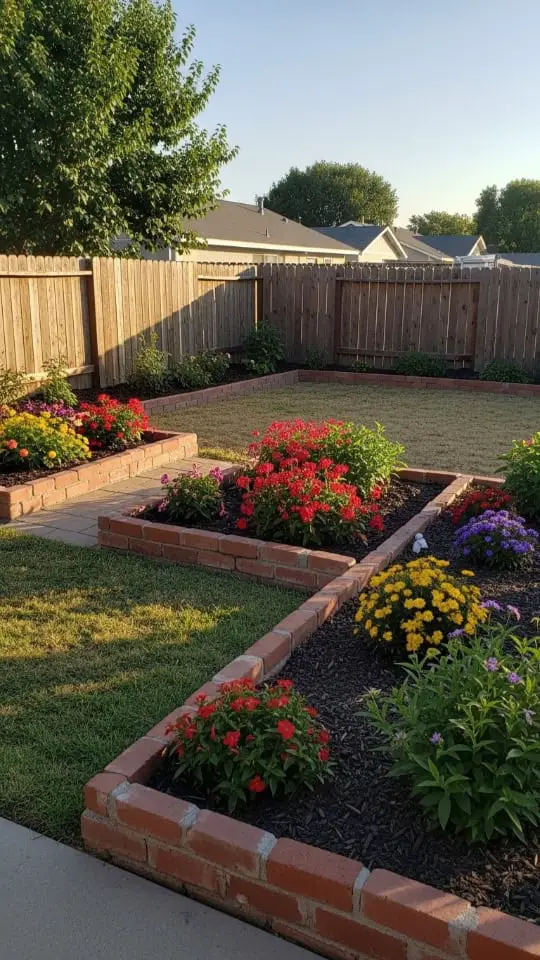
Cutting bricks creates dust, but it’s easy with the right tools like a circular saw and spade.
I dig past topsoil to lay a paver base before placing bricks. Filling gaps with polymeric sand keeps everything tight and tidy.
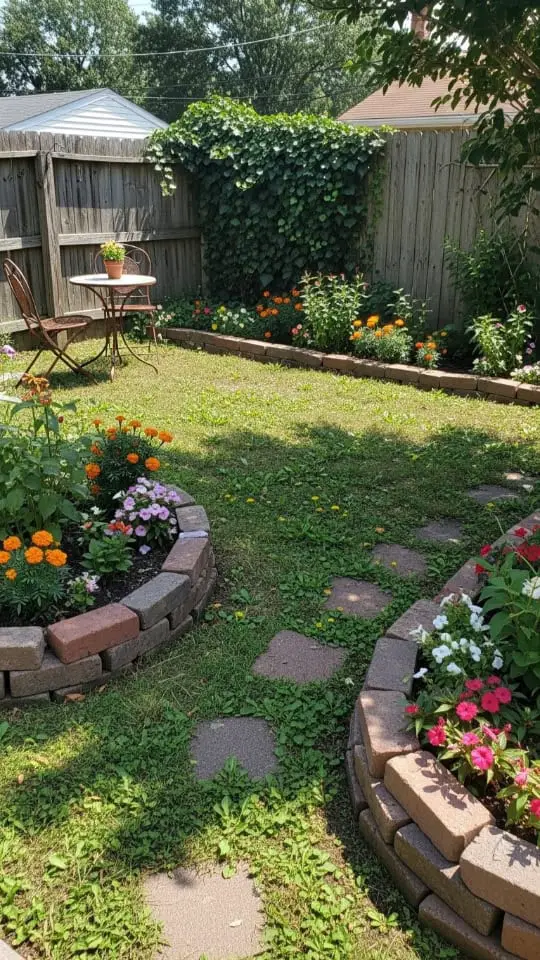
Using tools like a tamper and rubber mallet helps ensure smooth edges. These classic brick lines make colorful beds stand out beautifully… now onto cement edging!
Cement
Cement edging makes borders strong and long-lasting. It keeps mulch beds neat and grass in check. This type of garden edging needs proper installation, but it pays off over time.
The clean lines make my yard look sharp and organized. I like that it’s low maintenance too, saving me effort later.
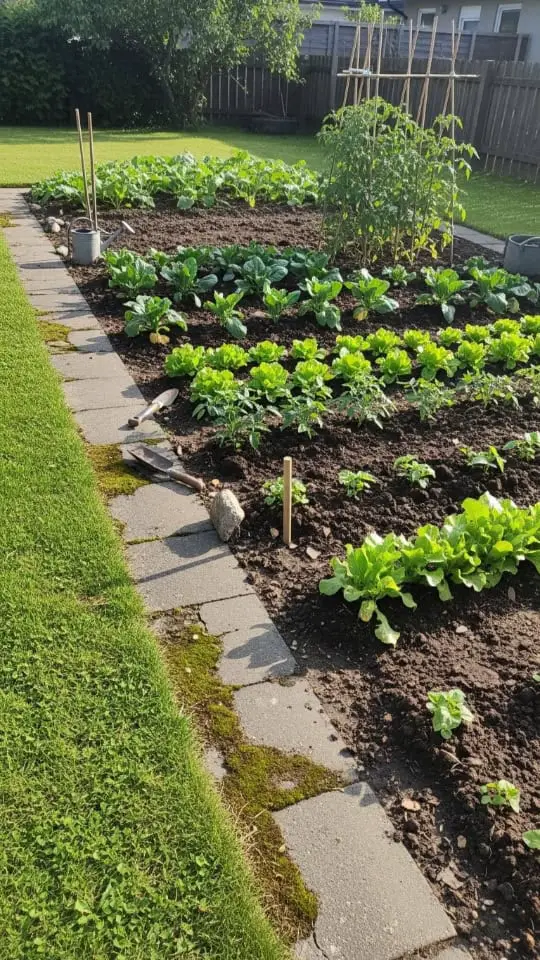
This option is cost-effective because it lasts for many years without much upkeep. Cement works well with nearly any garden design, from modern to natural styles.
Its durability means I don’t worry about replacing it often or fixing damage caused by weather or wear.

Cobblestone
Curved cobblestone edging adds charm to any garden. The texture catches the eye and feels timeless. It works well with lawns, blending into natural landscapes.
Both straight lines and curves look great with cobblestones.
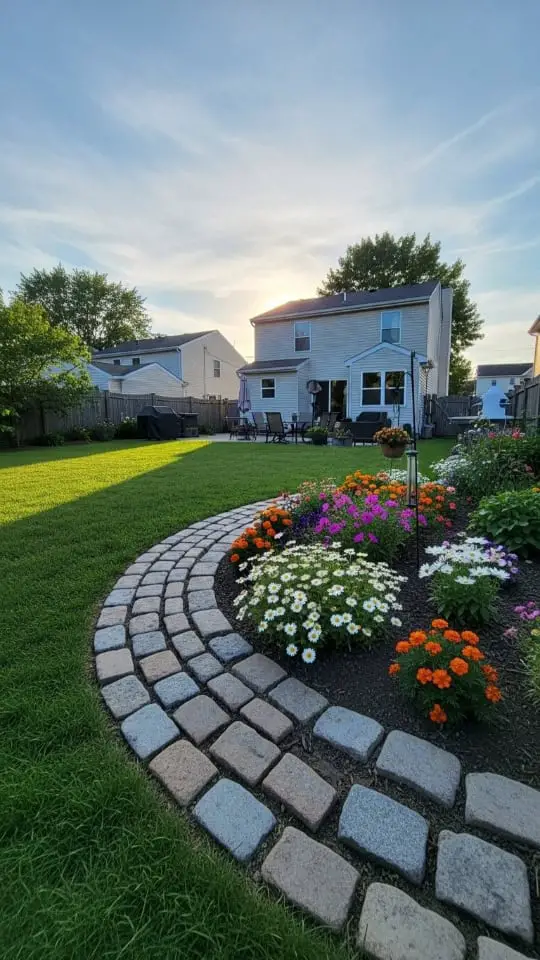
I like how sturdy it is for defining flower beds or paths. Its elegant style creates a polished look without much effort.
Using cobblestones makes landscaping feel complete and classy at the same time!

Concrete
Smooth concrete edging gives gardens a modern and clean look. It lasts for years, making it cost-effective and low-maintenance.
I like how the straight edges keep everything tidy, from flower beds to walkways. This type of landscape edging adds value too—up to 7% more on your home’s resale price!
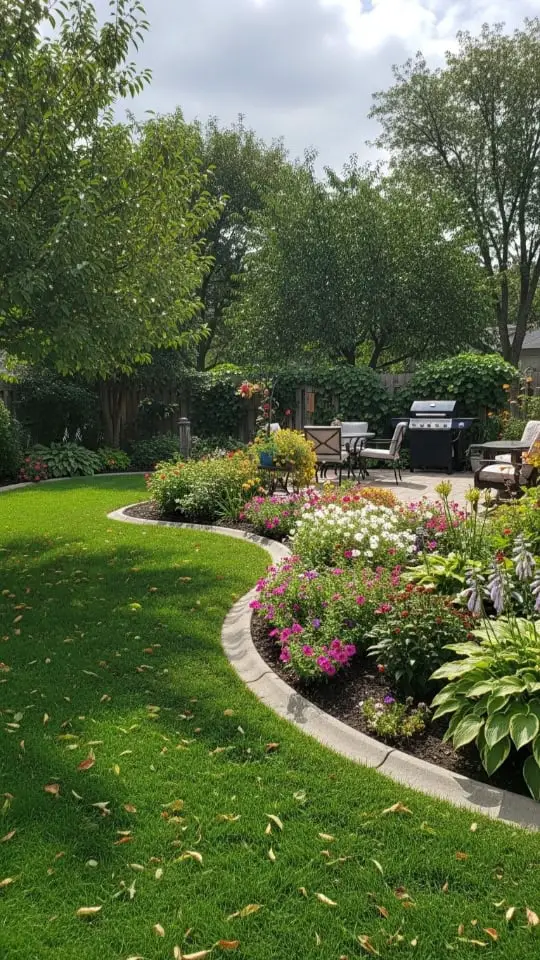
Concrete blends well with sleek designs in minimalist spaces. Techo-Bloc’s Raffinato line is one example that offers smooth finishes and neutral colors for a polished result.
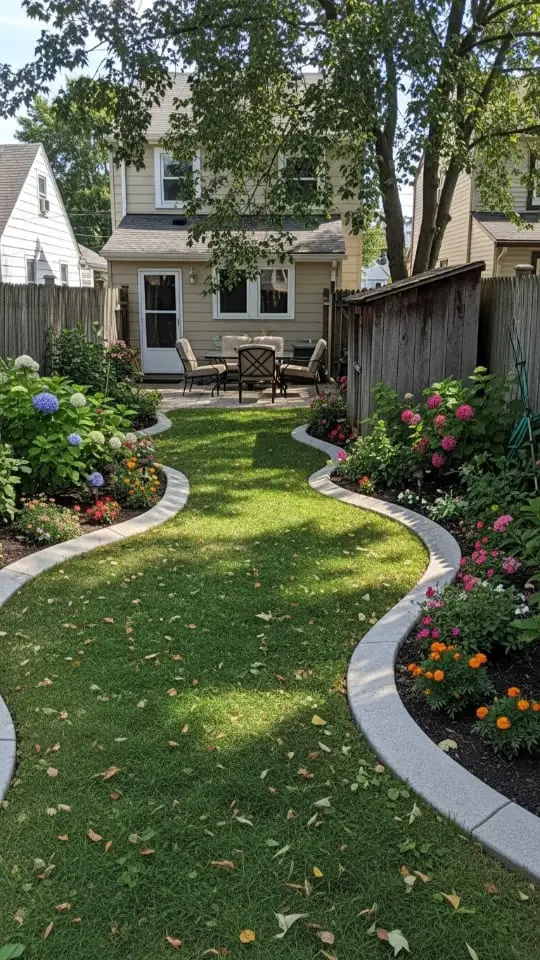
The strong material keeps gardens looking neat without much upkeep needed. Next comes flowing curves with garden curved edging ideas!
Curved
Concrete edging brings clean, modern lines to a garden. For a softer look, curved edging transforms flower beds into graceful shapes.
Flowing arcs mimic natural landscapes and create harmony in the yard.
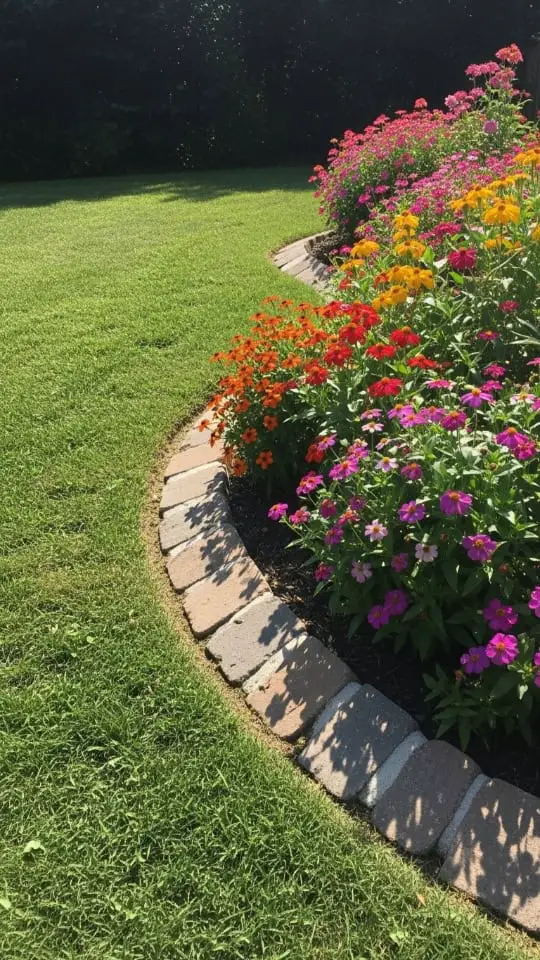
Continuous curves work better than smaller arcs for larger spaces. Overlapping circles or ellipses blend well on big lawns.
This design keeps the garden looking smooth and connected, making it more enjoyable to plant and maintain.
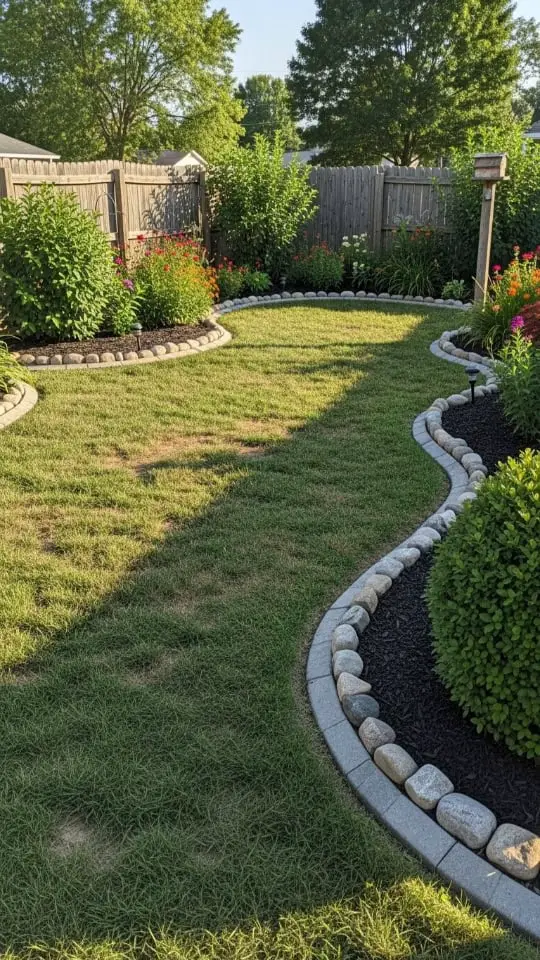
Flagstone
Flagstone edging adds a natural, rustic touch to any garden. It works well with many styles and enhances the space with earthy charm.
This material is strong and lasts for years in all kinds of weather.
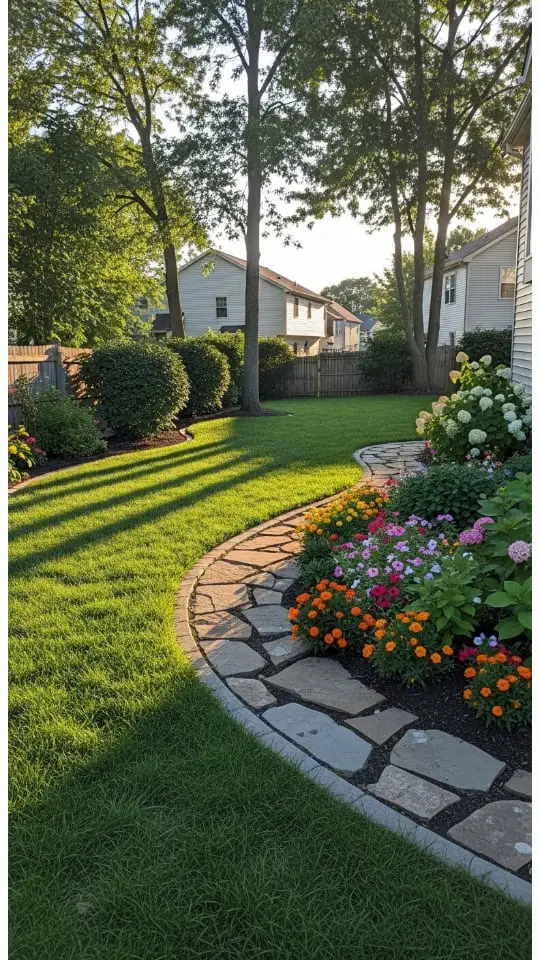
I like using it to create clear borders between my lawn and flower beds. It keeps mulch and soil in place while stopping weeds from spreading.
The rough texture blends naturally with plants, making the yard feel cozy yet polished. Flagstone can be arranged in different patterns for custom looks.
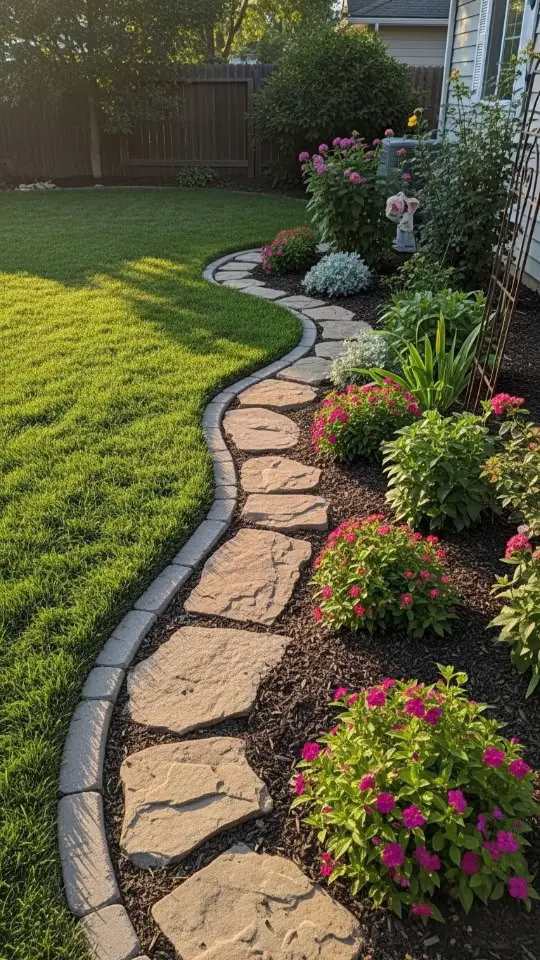
Combining it with other materials also adds neat contrasts to my landscaping design! Next, let’s explore how bright flowers pop against tidy edging!
Flower
Flagstone edging adds charm, but colorful flower beds bring true backyard joy. Neat garden lawn edging keeps flowers tidy and enhances their beauty.
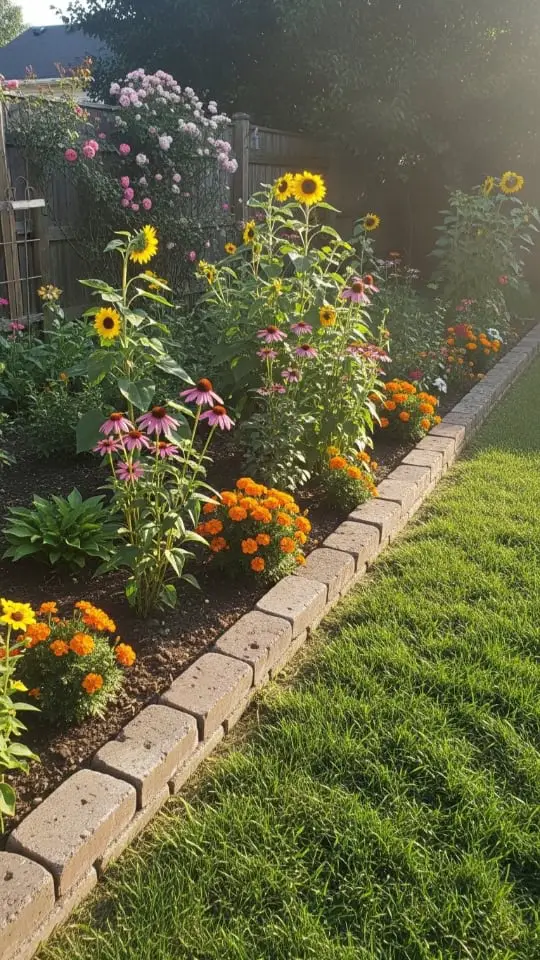
Bright blooms like Begonias or Coral Bells thrive with proper light, soil, and water. Creeping Thyme works well too, acting as a soft green edge while attracting bees.

Strawberries are another great option for both fruit and flowers along the border. With clear lines between grass and plants, my garden feels vibrant yet neatly organized year-round.
Path
I like using defined garden path edging to keep flowers neat. It stops grass from spreading and adds a clean look along walking routes.
Borders make paths easy to follow while protecting plants.

Plastic landscape edging works great for curves, staying flexible yet firm. I’ve also tried stones and bricks that give gardens a natural or classic charm.
These options help maintain tidy spaces and reduce soil erosion after rain.

Pond
Stone pond edging adds a natural look to any garden. I use it to frame my pond with boulders or granite blocks for a sturdy border.
Proper digging ensures the stones stay in place, and backfilling with soil or gravel keeps it stable. This edging helps stop soil from washing into the water.
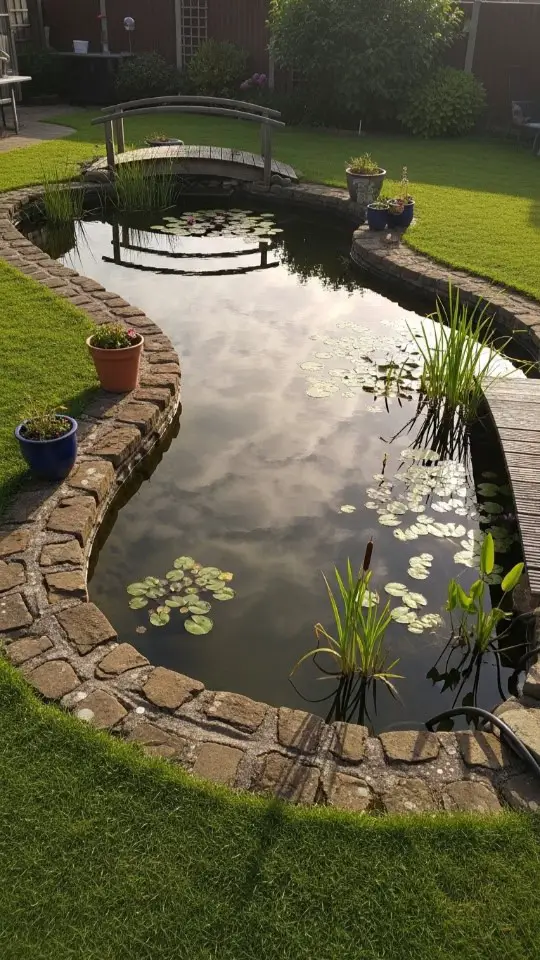
I love how stone creates a smooth transition between my pond and plants. It blends the water feature with the rest of the landscape beautifully.
The right size rocks make everything feel balanced while keeping erosion under control. A finished edge like this makes any yard feel peaceful and complete!

Japanese
I love the calm beauty of Japanese garden edging. Using stones and grass creates a peaceful look that feels balanced. Small stones or smooth gravel form paths or borders.
Grass adds softness and connects the design to nature.
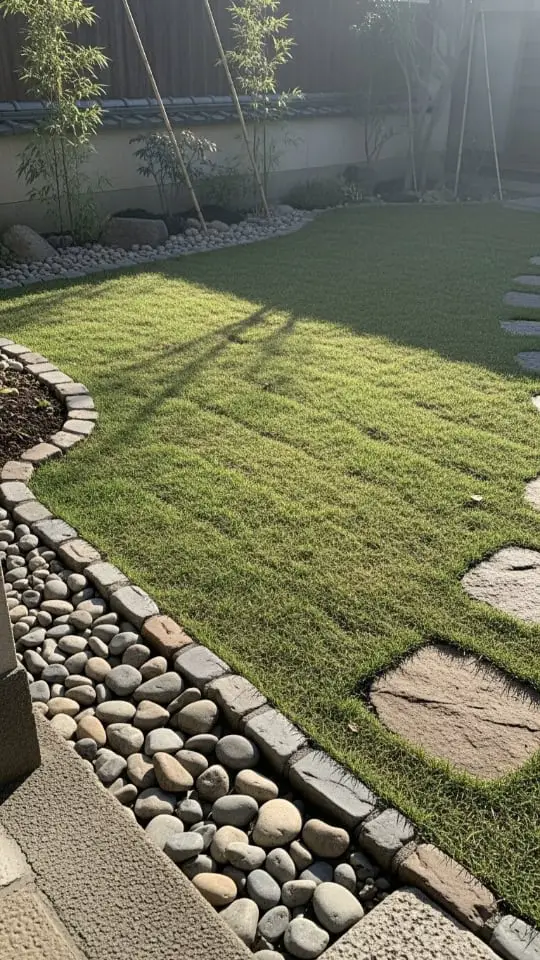
Bamboo, stone, and gravel are key materials in this style. They bring warmth while keeping things simple.
This edging works even in busy urban yards by promoting mindfulness with its clean lines and serene vibe.
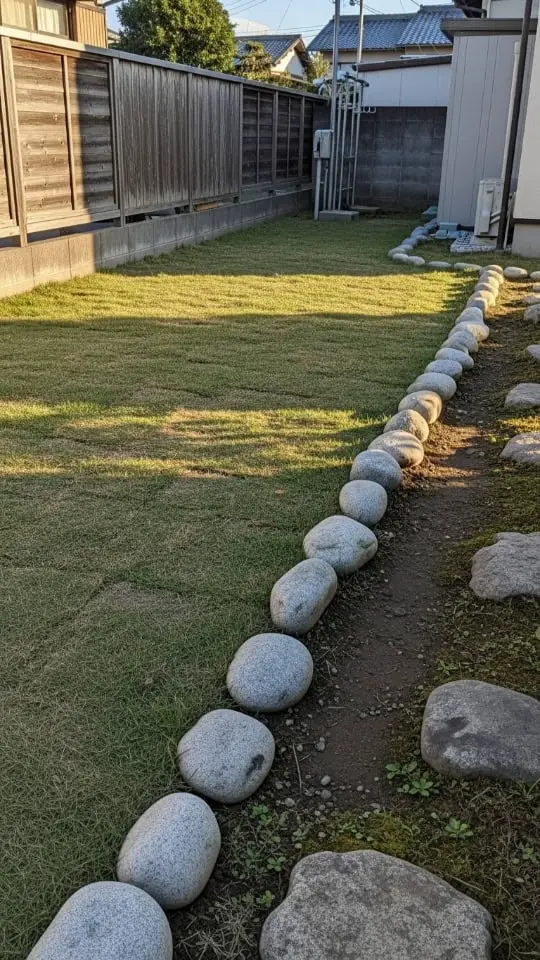
Modern
Modern edging uses clean lines and simple designs. It contrasts beautifully with lush green grass, giving a sharp, sleek look. Materials like metal, wood, or stone work best for this style.
They keep grass in check and make plants stand out more.
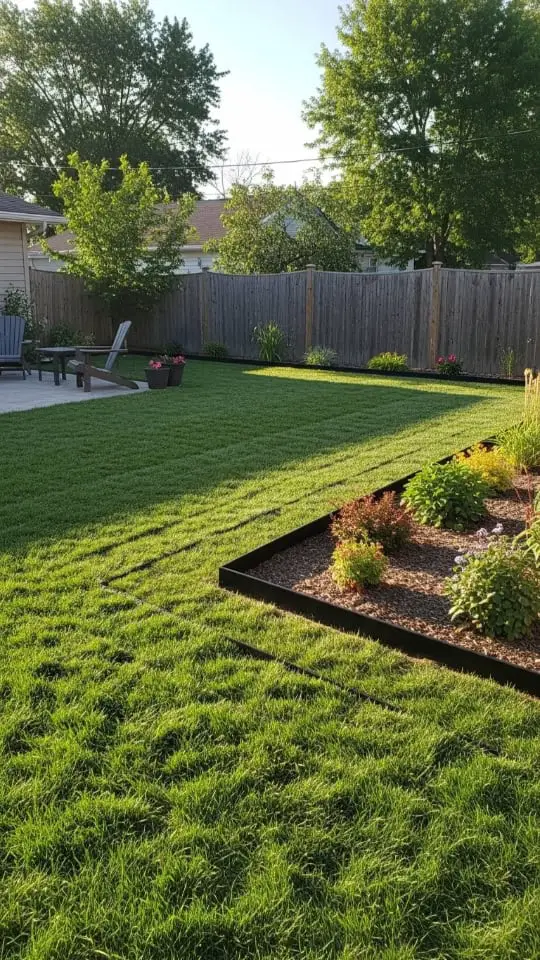
This type of garden edging is low maintenance. I find it perfect for slopes since it simplifies upkeep there too. Decorative fences can add charm while supporting climbing plants.
This mix of function and beauty boosts the appeal of any modern yard design!
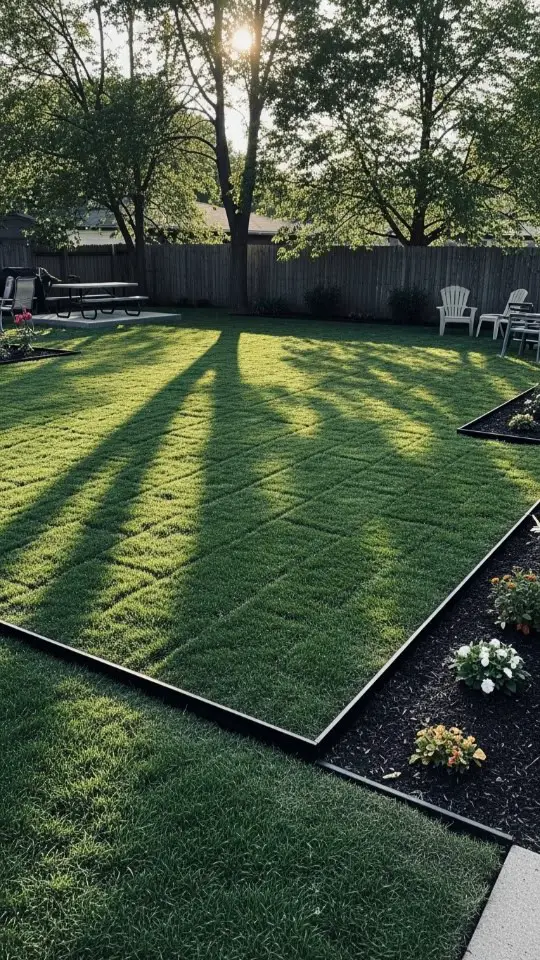
Mosaic
Mosaic edging uses small pebbles, tiles, or stones to make colorful garden borders. I love how it adds a fun and artistic touch to flower beds. The patterns can be simple or more detailed, depending on your style.
This type of garden lawn edging makes the space look bright and unique.
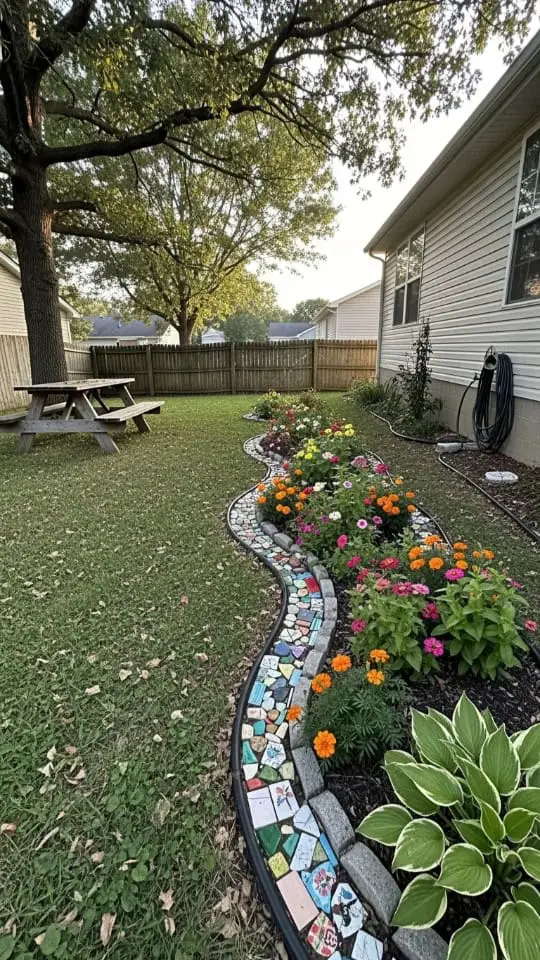
I enjoy using mosaic designs because they let me get creative with my landscaping. Mixing different materials creates beautiful textures in the yard.
The playful colors also bring life to plain areas around lawns or paths. It is perfect for anyone who enjoys DIY gardening projects!
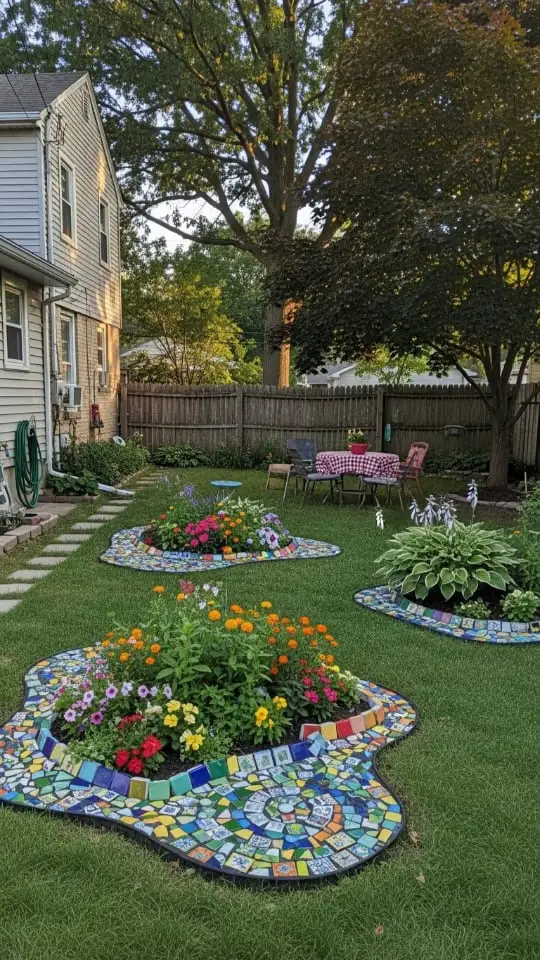
Pallet
Mosaic edging adds playful charm, but pallet edging brings natural warmth. I love using old pallet wood to build garden borders. It’s cheap, eco-friendly, and full of rustic character.
Pallets can outline flower beds or veggie patches with a handmade touch.
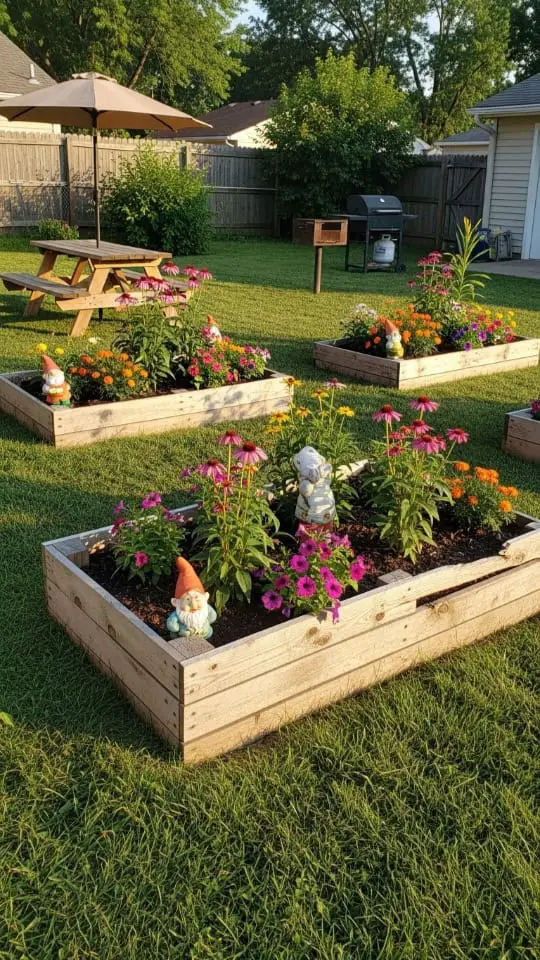
I secure the pallets with garden stakes for stability. Adding weather-resistant sealant keeps them looking great outside.
Using recycled materials like this makes landscaping affordable and creative. Plus, it helps reduce waste in my yard projects!
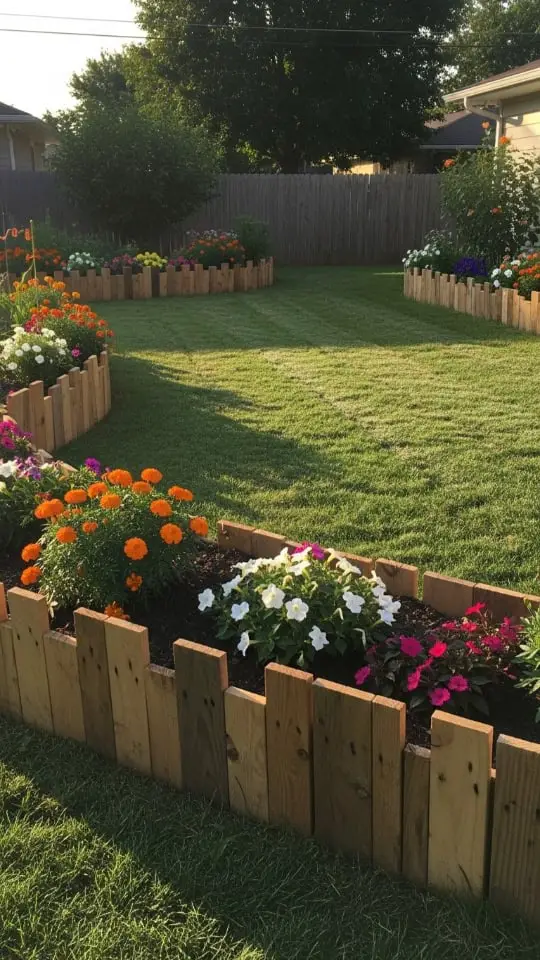
Paver
Paver edging adds clean lines to any garden bed. It keeps soil and mulch in place while stopping weeds from spreading. This type of landscape edging gives stability and looks balanced.
The materials are durable, so the borders last a long time.
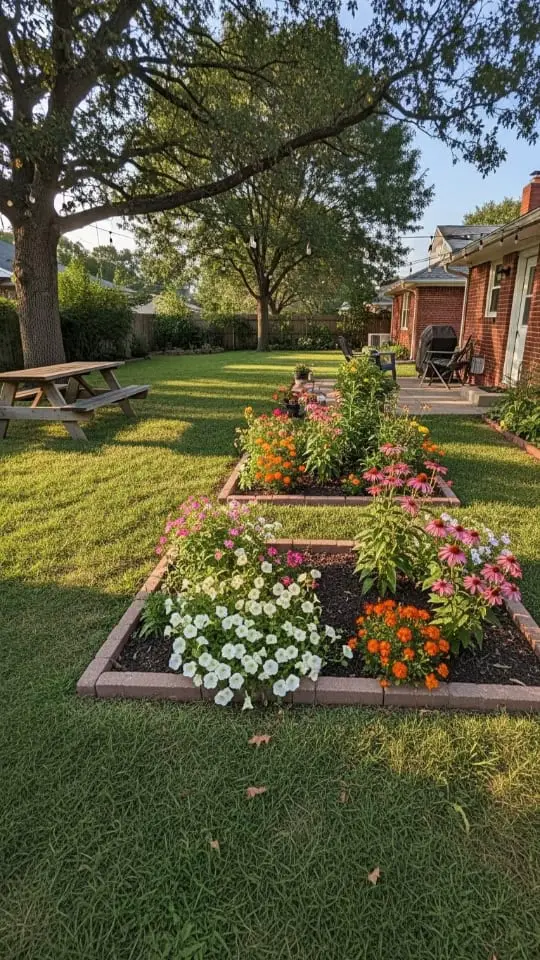
I like how easy pavers are to install. Their uniform design fits almost any layout. They add structure without needing much upkeep.
I’ve noticed they stay neat, even after heavy rain or busy seasons in my garden beds!
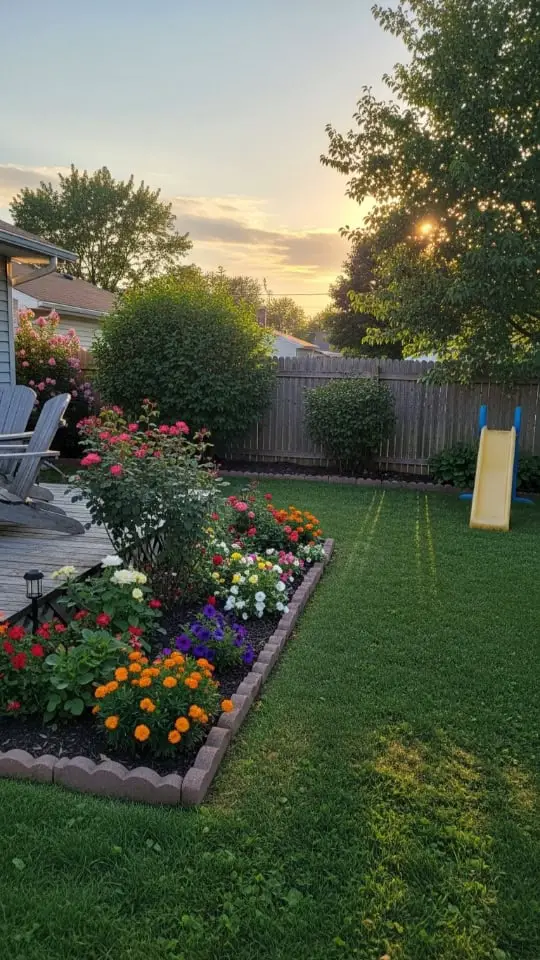
Plastic
Plastic lawn edging works wonders for keeping flower beds tidy. It’s lightweight, easy to handle, and flexible enough to follow curves in the garden.
I like how it keeps grass from creeping into my flower beds while giving a neat and polished look.

The AMURS black plastic edging is an excellent choice for this. It spans 20 feet with 20 interlocking pieces that are quick to install using a rubber mallet.
Each piece measures 12.16 x 5.9 inches, making it perfect for small or large spaces. Plus, it’s durable but doesn’t weigh much—just over two pounds!
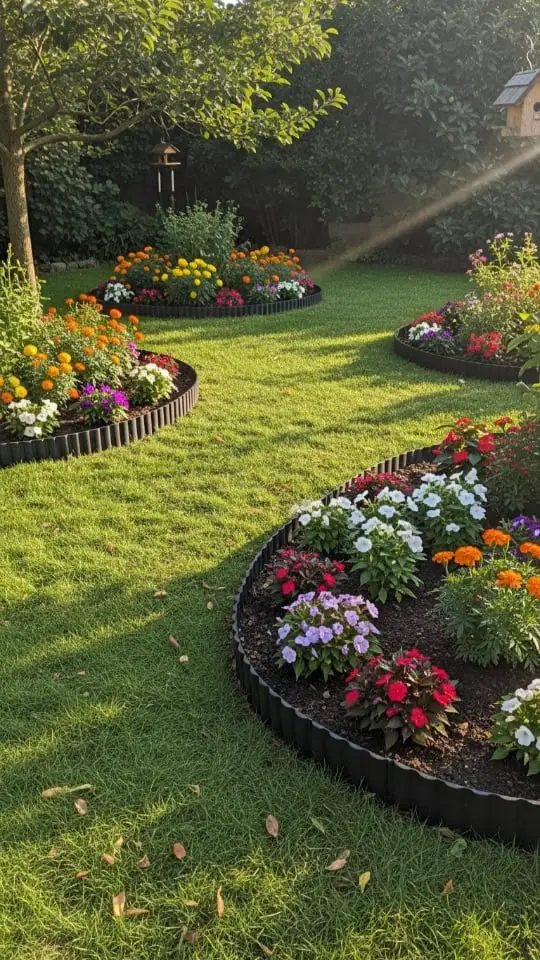
Rubber
Rubber edging lasts long and stays strong in all weather. It protects garden plants while being eco-friendly. I like how it offers sturdy borders that stay in place.
Vigoro EcoBorder, a popular choice, comes in 4-foot pieces for easy use. It is simple to install without cutting! The flexible design makes shaping the edges fast and neat.
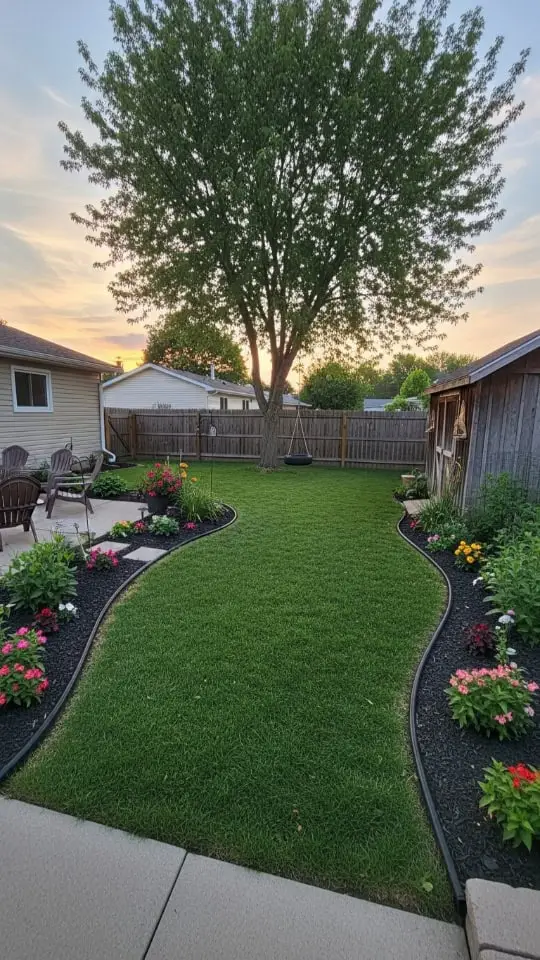
This edging works well for anyone who wants durable, safe, and green border solutions for their garden beds.
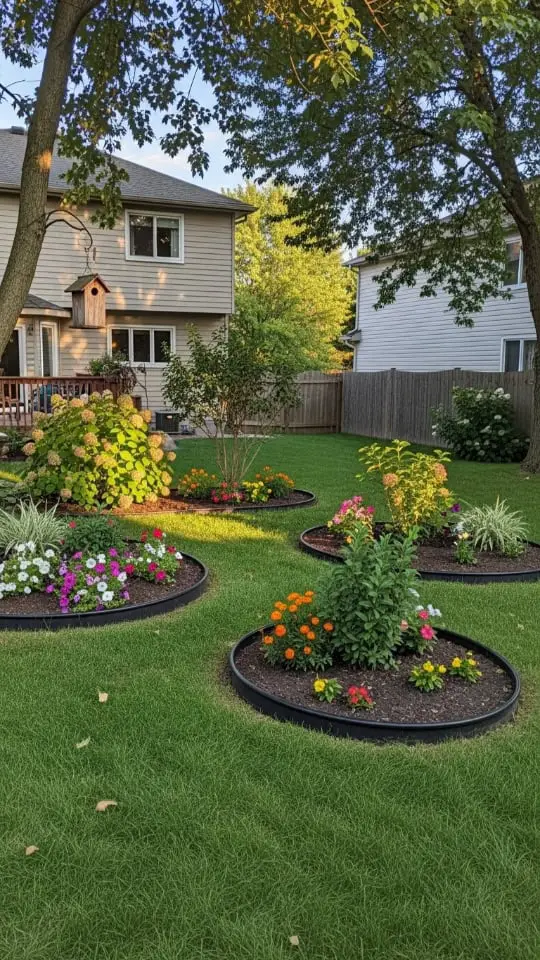
Sandstone
I like using sandstone for lawn edging. It adds soft, warm colors to my garden. The natural look blends perfectly with flowers and plants.
Sandstone also helps create smooth garden lines that feel relaxing.
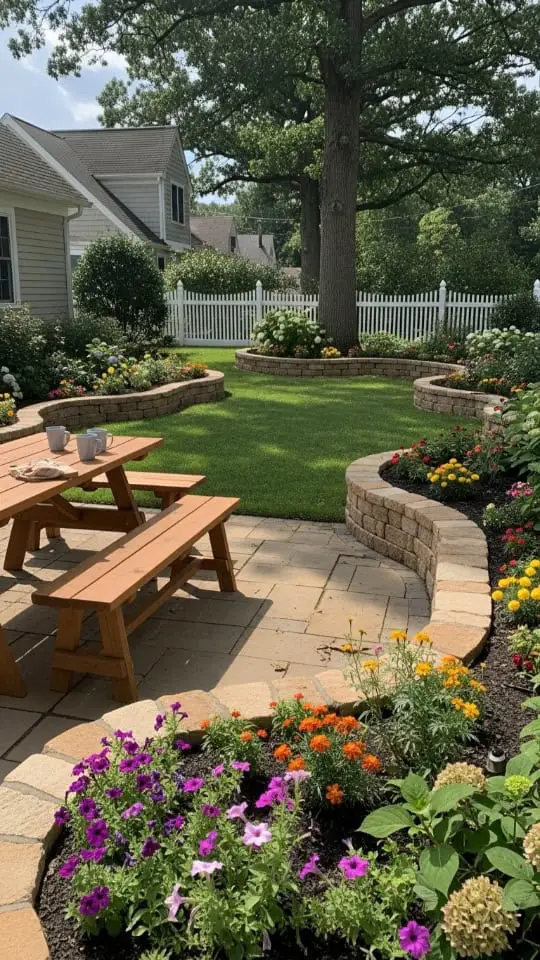
It’s a good choice for DIY projects since it’s affordable, usually costing $50–$100. I’ve seen it sold at Home Depot and other stores.
Sandstone keeps flower beds neat while making outdoor spaces more attractive.
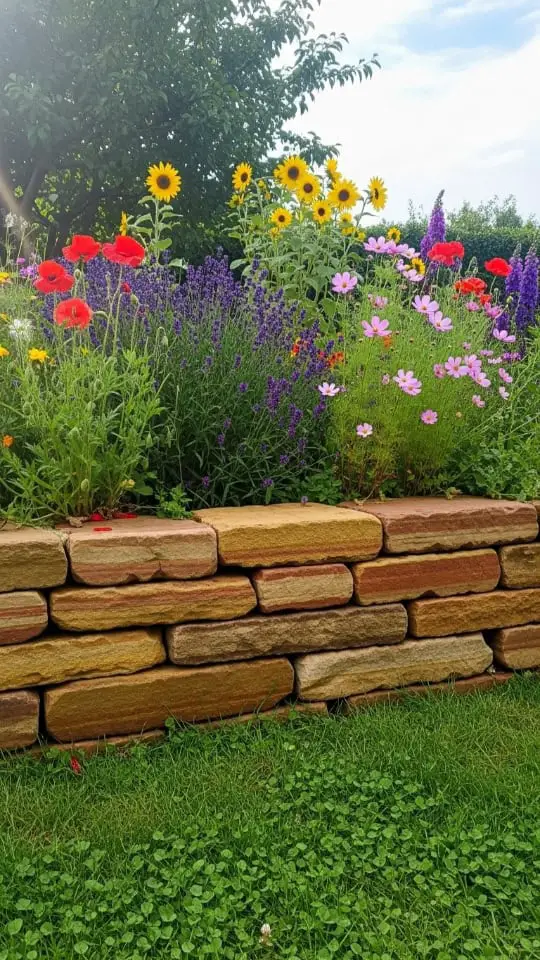
Scalloped
Scalloped edging adds charm to flower beds. It makes gardens look like a tiny, whimsical village. This decorative style creates neat lines for patios and walkways.
The poly material stays strong and weather proof all year.
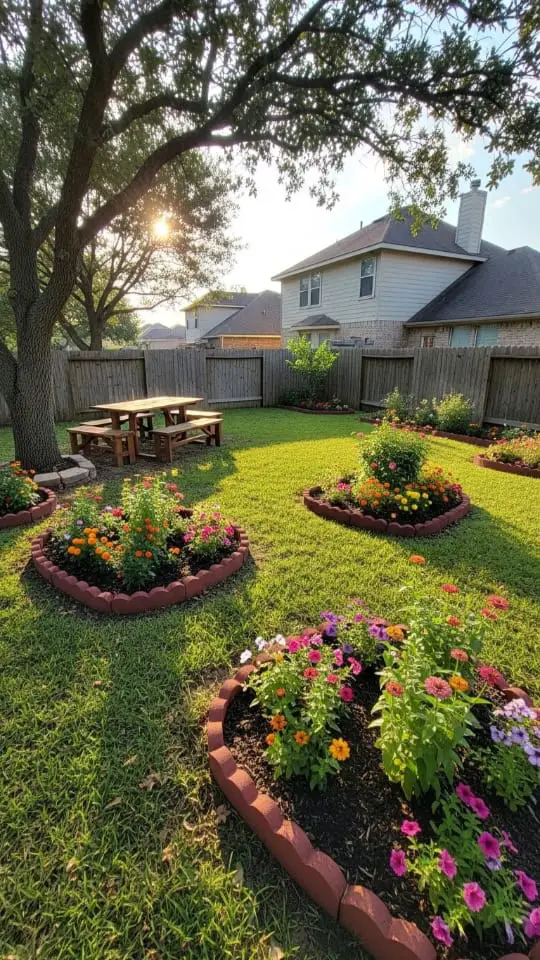
Each piece is 5.9 inches long and 12.16 inches wide, making it easy to use in any yard size. A pack comes with 20 pieces, weighing about 2.13 kilograms together.
This plastic garden edging ranks #107 in Garden Edging on Amazon with a solid 4.4 stars from over 277 reviews! Next up, explore wooden sleeper borders for raised planting beds!

Sleeper Borders
Scalloped edges add charm to flower beds, but wooden sleeper borders bring structure and height. These borders are perfect for neat planting areas.
Each sleeper measures about 200mm wide and 100mm deep, making them a great fit for raised garden beds.
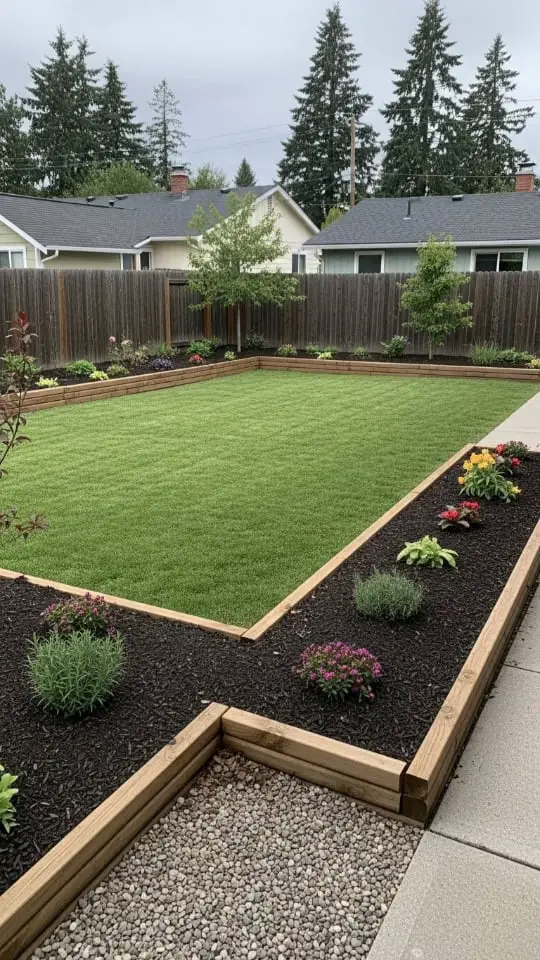
I love how easy these are to set up! No digging is required since they use a double tube method. I just grab my rubber mallet and spirit level for installation.
Made from treated softwood like pine or timber, they last long and look natural in any yard design.
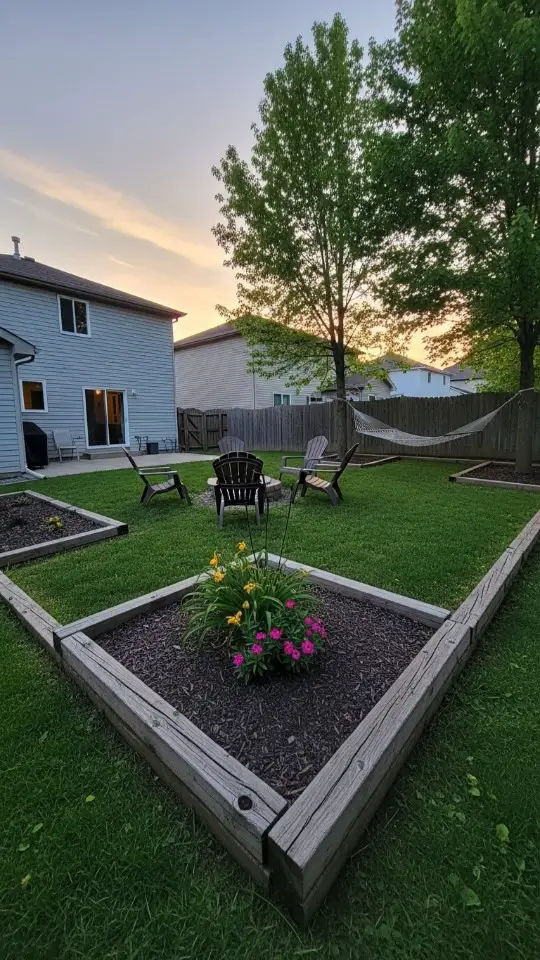
A favorite on Etsy with a 5-star rating from 63 buyers makes this an excellent choice for DIY projects starting at $92.92!
Steel
Steel edging adds sharp, clean lines to any garden. It gives a modern look while keeping lawns and flowerbeds in place. I like how it stays strong and lasts for years without bending or breaking.
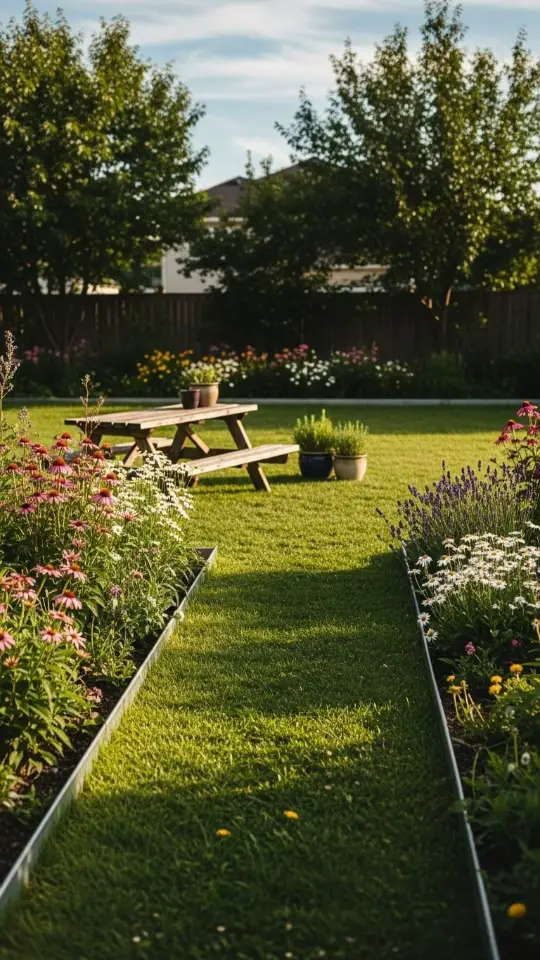
The easy hammer-in feature saves time during setup. Steel pieces from Edge Right come in 4-foot, 2-foot, or 1-foot lengths. This makes creating curves or straight edges simple.
Its durability means no need to replace it often, making it worth the cost.
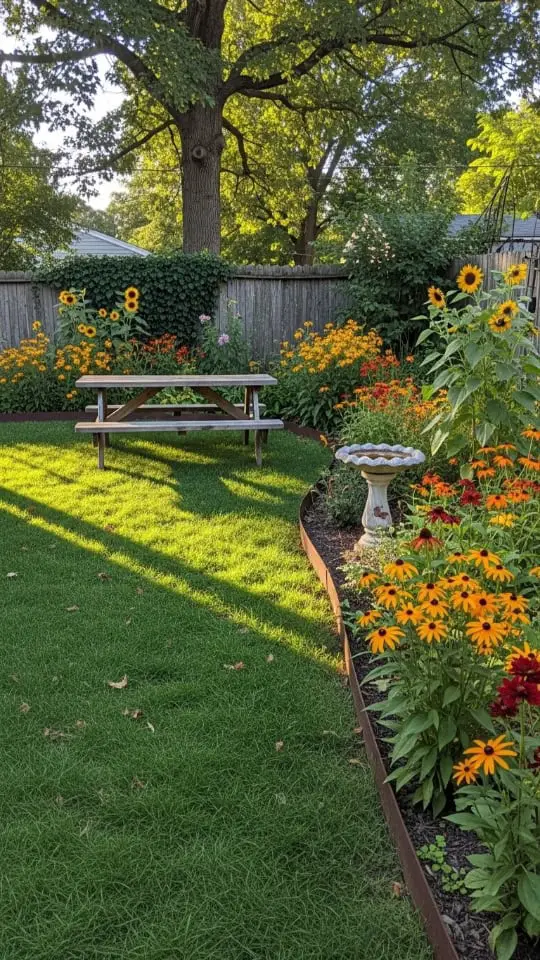
Stone
Stone edging gives gardens a natural, rugged look. I love how it blends with plants and adds earthy charm. The durability makes it perfect for any yard, even sloped spaces.
Over time, the stones age beautifully with the weather.
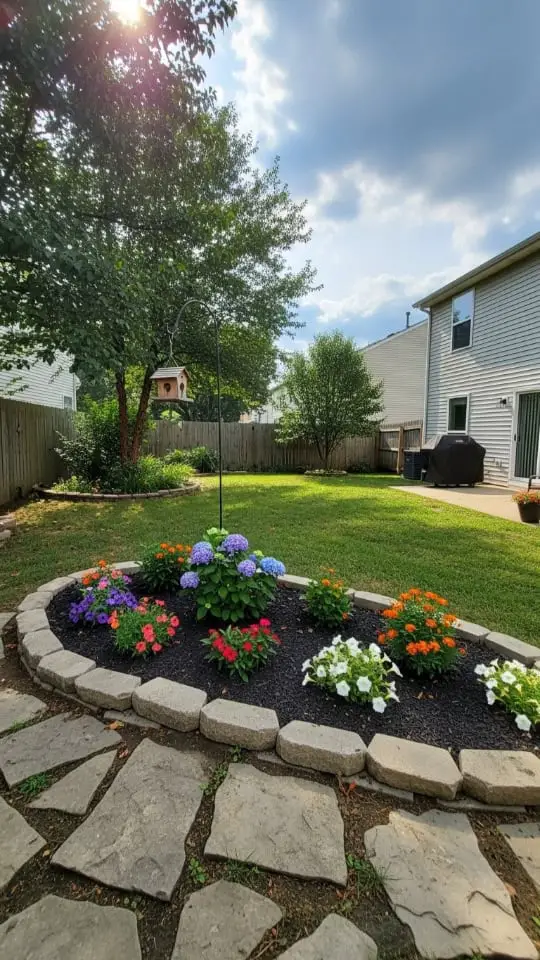
Installing stone borders is simple and quick. They create strong edges for beds or paths, keeping everything neat. Large vertical stones work great on uneven surfaces too!
Plus, they feel sturdy underfoot if used as walkways.
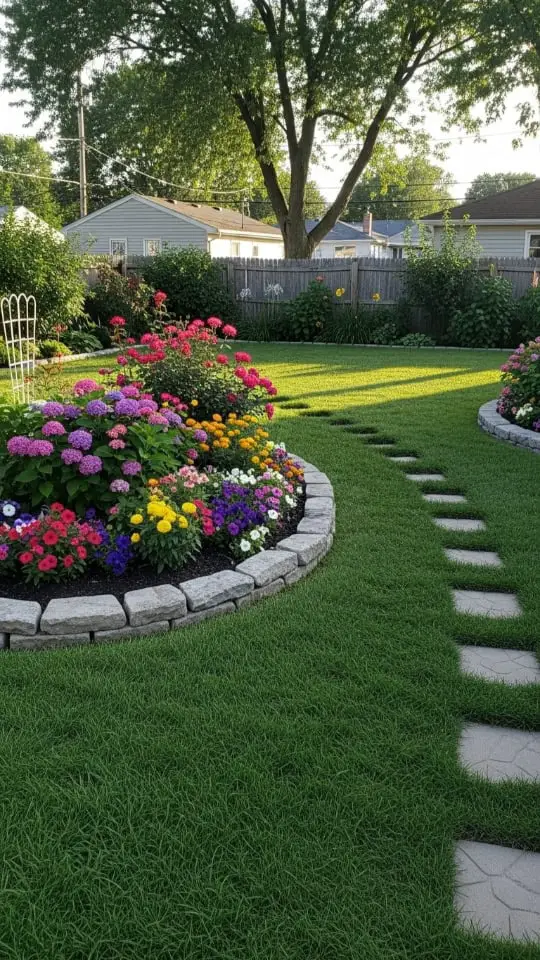
Timber
Timber edging gives flower beds a natural and cozy look. I like how the rustic wooden accents blend with any garden style. The logs are solid pine, carbonized to handle weather better.
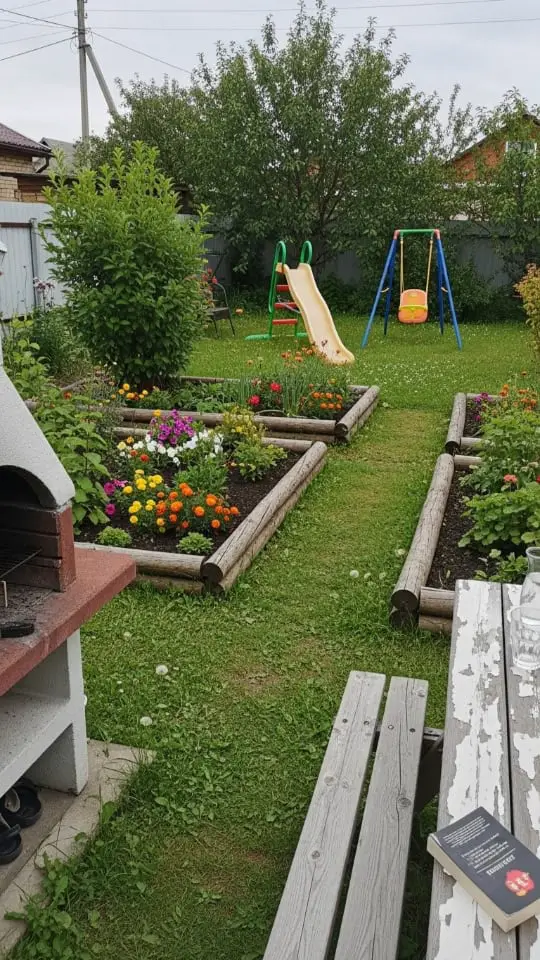
Each log measures 11.8 x 35 inches and comes in packs of four. No tools are needed; I just unroll it, shape it around my beds, and store it easily when not in use.
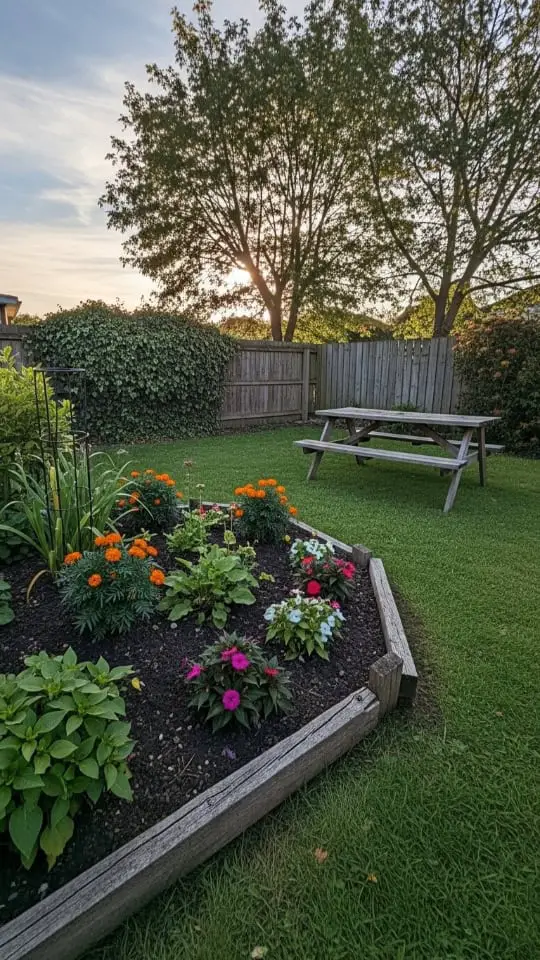
The durable twine ties it all together neatly. It’s rated 4.4 stars by customers for its strength and charm! Next up is tropical lawn edging for bold gardens full of life.
Tropical
Timber edging feels warm and cozy, but tropical edging takes it to the next level. Bright borders and bold designs can make any garden pop.
I love how tropical edging keeps soil steady while giving a vibrant touch. It works great in gardens with erosion problems or heavy rains.
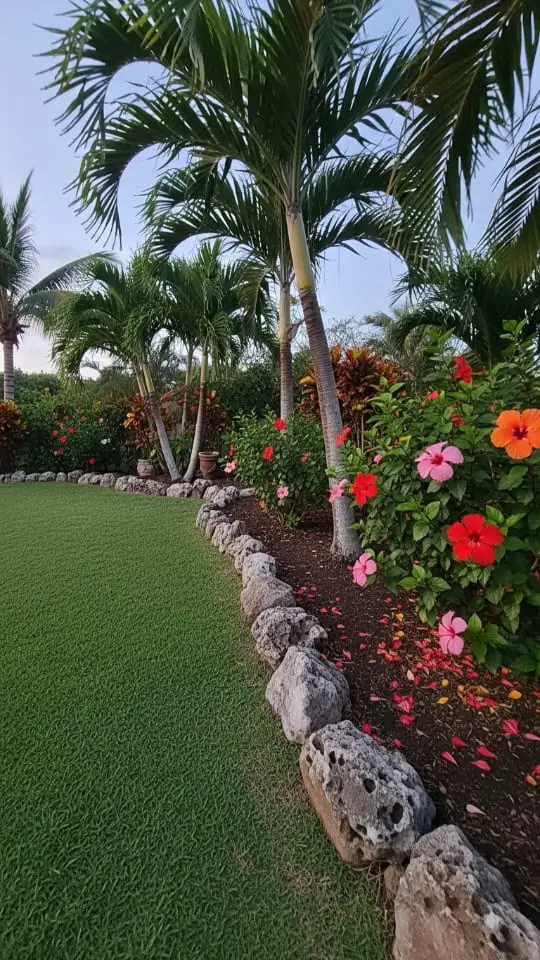
This type of border makes lush green plants stand out more against colorful surroundings like flowers or shrubs.
Tropical themes pair perfectly with this style, creating strong lines yet blending smoothly into nature’s palette.
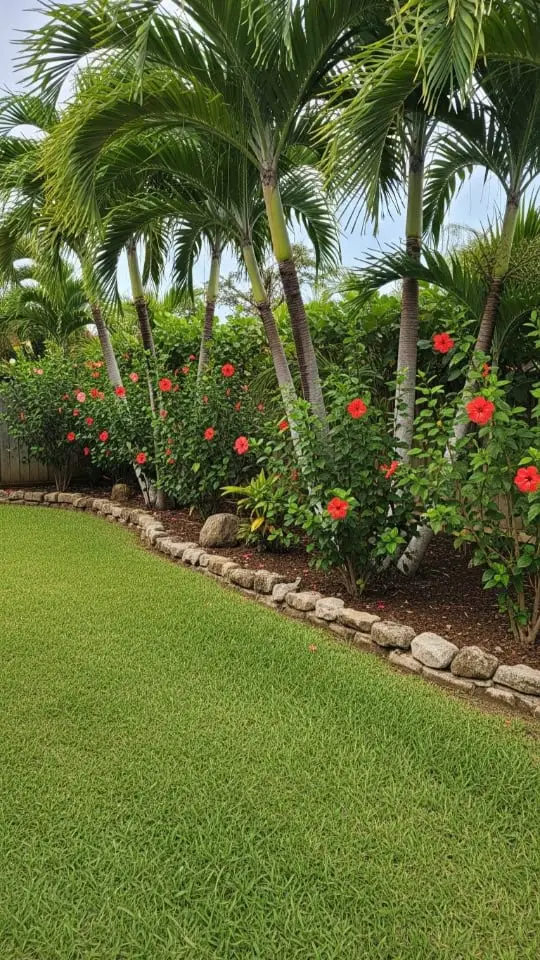
White
White lawn edging creates sharp, clean borders for flower beds. It makes the colors of plants stand out while giving a neat look to the garden.
I like how it brightens up spaces and adds polished charm.
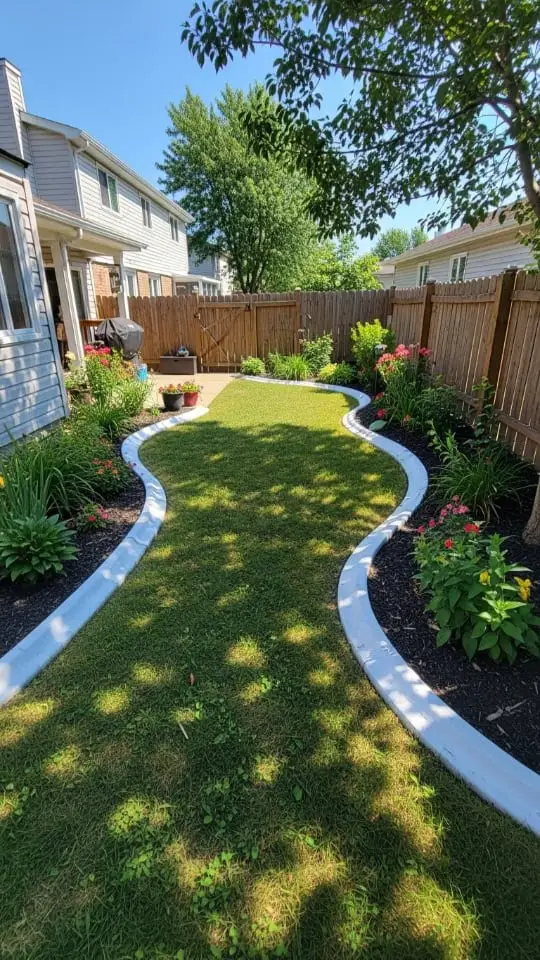
The EasyFlex No-Dig Landscape Edging is one great option. It comes in a 15-foot kit with anchoring spikes.
The tall Adirondack wood-look style suits modern gardens well and offers durability too. Free shipping is available at Home Depot, which is handy for gardeners looking to save time.

Willow
Woven willow edging brings a cozy, rustic feel to any lawn or flower bed.
I love how it adds texture and charm while keeping garden edges neat. A 2×14-foot willow border fence works great for defining walkways or lawns with style.
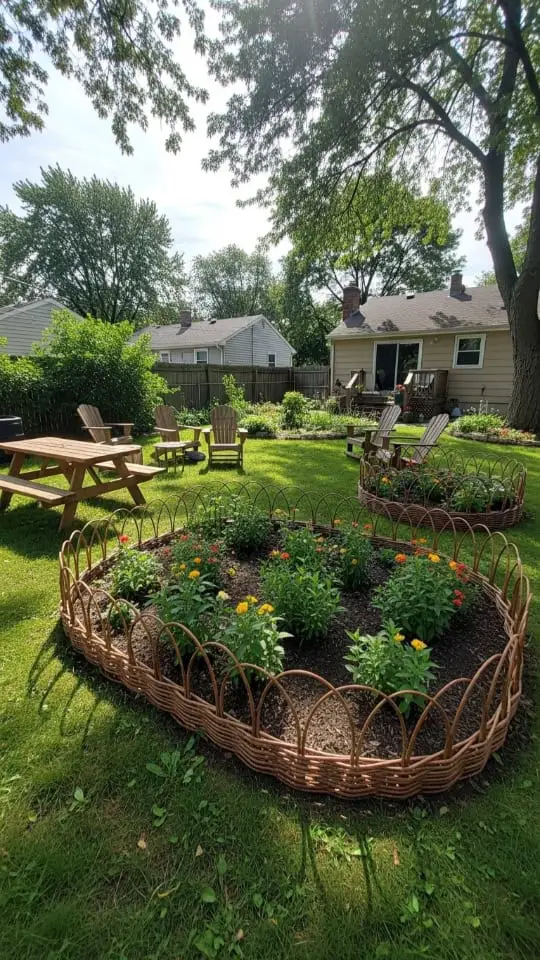
It’s durable, versatile, and easy to set up.
The MGP 4 ft. Vertical Woven Willow Edging comes in a two-piece set for $86.59 but costs only $61.59 for new Home Depot cardholders. Free returns within 90 days make it hassle-free!
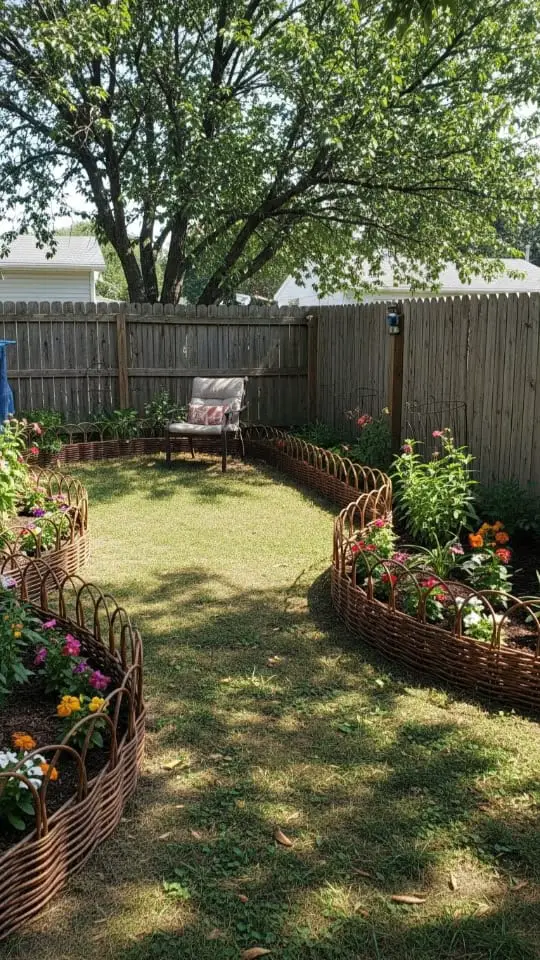
Its woven design helps boost organization while blending beautifully with natural surroundings in the garden.
Wine Bottle
I use old wine bottles to make colorful lawn edging. I flip the bottles upside down and bury them halfway. This creates a fun, artistic border around my garden beds.
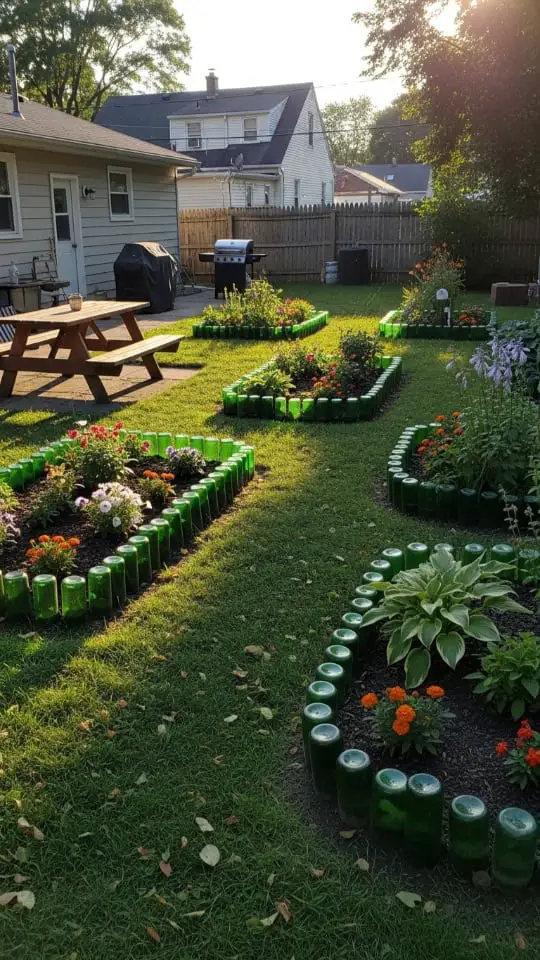
The edging is strong and keeps pests like gophers out of plants. It also helps recycle waste in an eco-friendly way. Adding these bright edges gives my garden a personal touch!
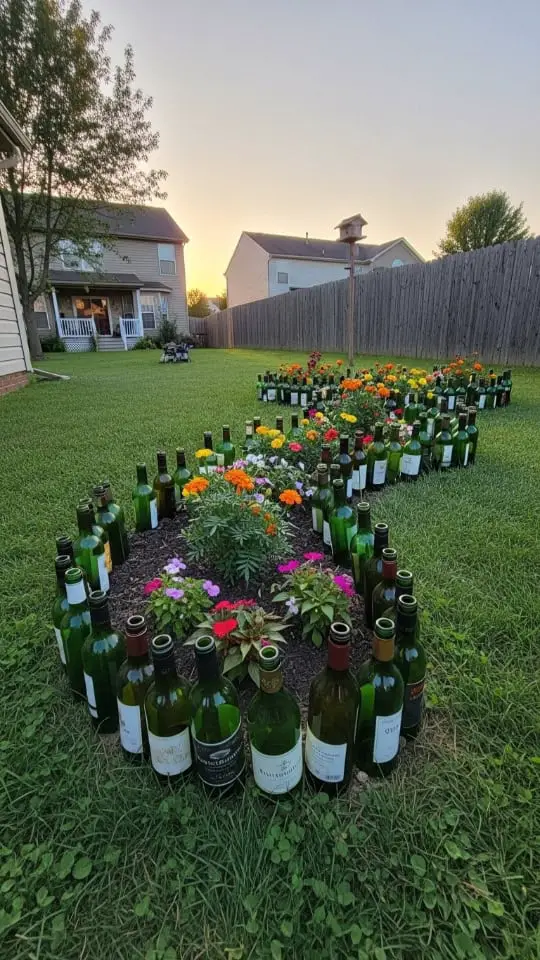
Wooden
Glass bottles add charm, but wooden edging brings warmth to my garden beds. I love its natural look and how it blends with plants.
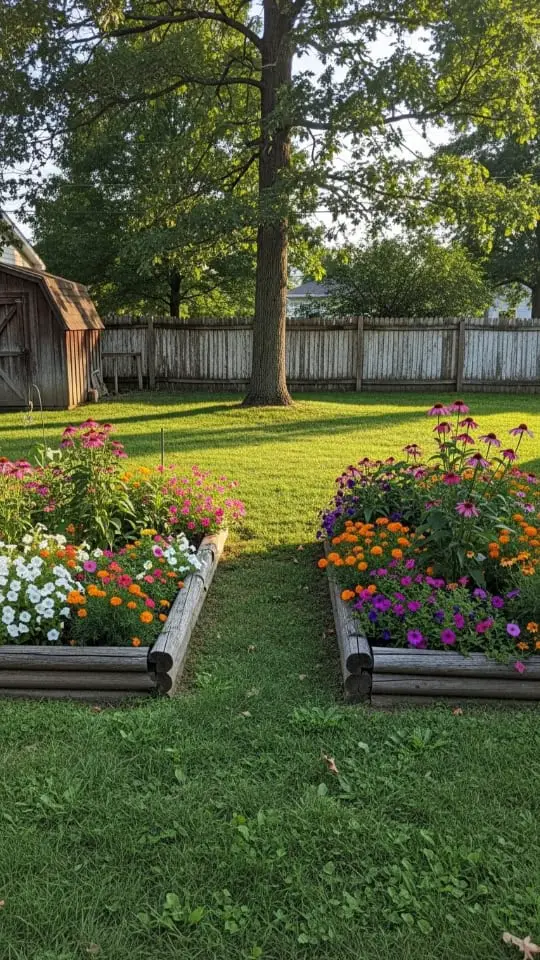
The solid pine logs are strong and weather-resistant. Each log is 72 inches long, 6 inches tall, and easy to set up without tools.
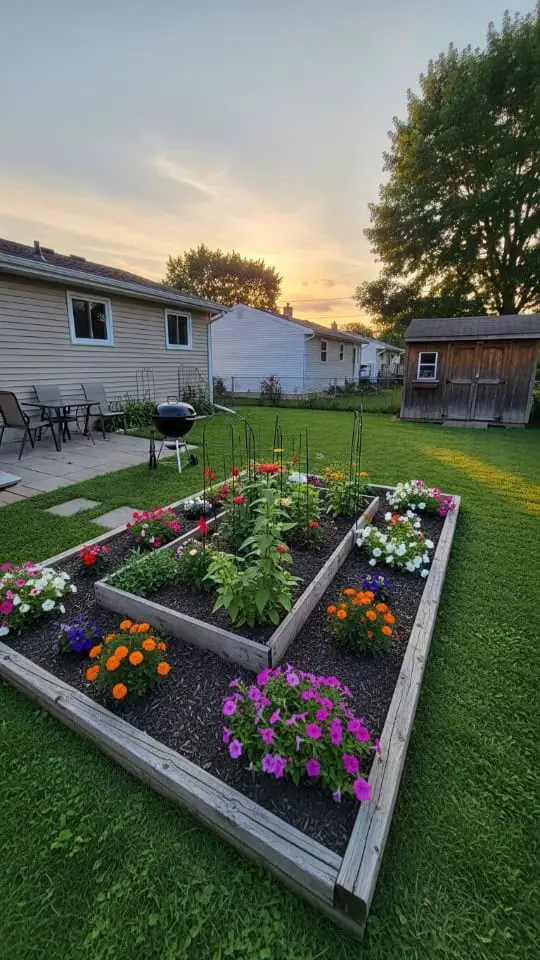
The dark carbonized finish protects from rain while keeping a rustic vibe. This edging makes paths or flower beds neat and cozy all year round!
Conclusion
Edging a lawn can truly transform a garden. From bricks to bamboo, each idea adds something special. I love how simple materials create beautiful borders.
You don’t need fancy tools or big budgets! Pick one, and start shaping your dream garden today.
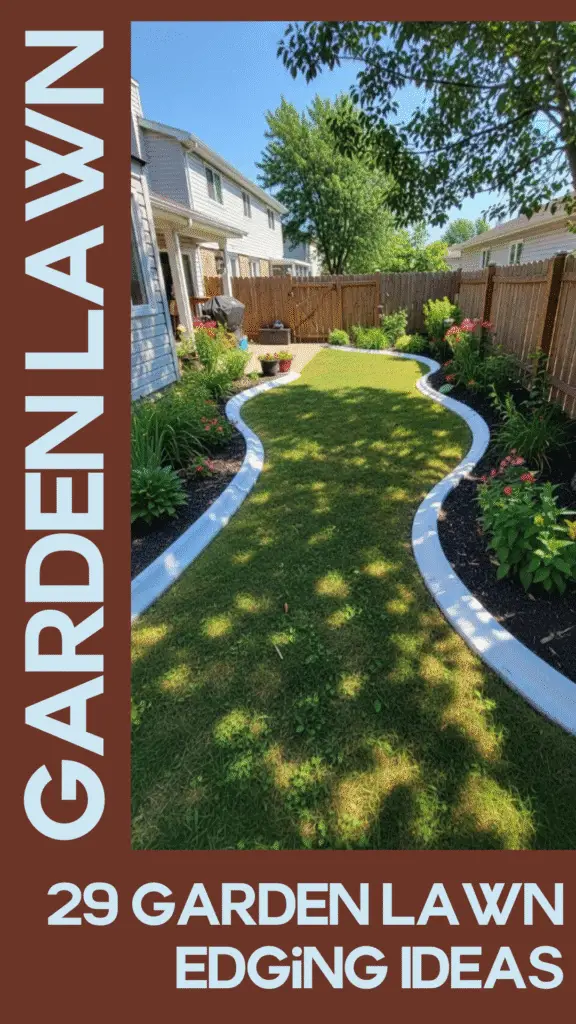
FAQs
1. What is lawn edging, and why should I use it?
Lawn edging creates a clean border between your grass and garden beds. It keeps everything neat, prevents grass from spreading into flower beds, and adds style to your yard.
2. What are some common landscape edging materials?
You can choose from many options like plastic landscape edging, metal edging, recycled rubber edging, poured concrete edging, or even natural materials like stones or railroad ties.
3. How do I install garden lawn edges myself?
Start by marking the edge of your lawn with a clear line. Use tools like a shovel or rubber mallet to secure the chosen material in place. Follow the instructions for each type of material carefully.
4. Are there budget-friendly options for garden edging?
Yes! Recycled rubber edging and plastic landscape borders are affordable choices that look great while lasting long.
5. Can I use everyday items as part of my garden design?
Absolutely! Items like old bricks or leftover curbs can work well as creative alternatives for traditional lawn edges while saving money at checkout time on new supplies!




